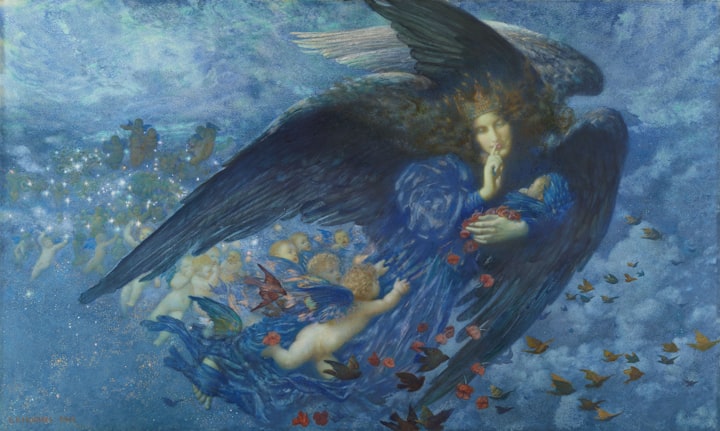How to Create Stunning Digital Art Using Various Software Tools
How to Create Stunning Digital Art Using Various Software Tools

Unleash Your Creativity and Master the Art of Digital Design!
Are you ready to dive into the exciting world of digital art? Whether you're a seasoned artist or just starting out, creating stunning digital artwork has never been easier or more accessible. With a wide range of software tools at your disposal, you can bring your imagination to life on a digital canvas. In this comprehensive guide, we'll explore the various software tools and techniques that will help you unlock your artistic potential and create breathtaking digital art. So grab your stylus and let's get started!
Table of Contents
Introduction
Understanding Digital Art
Choosing the Right Software
Mastering the Basics
Exploring Brushes and Textures
Understanding Layers and Blending Modes
Adding Depth and Dimension
Creating Stunning Effects
Advanced Techniques for Realistic Art
Mastering Composition and Lighting
Tips for Creating Unique Artistic Style
Troubleshooting Common Issues
FAQs
Q: What are the best software tools for digital art?
Q: Do I need expensive equipment to create digital art?
Q: Can I use a tablet or a computer mouse for digital art?
Q: How do I choose the right color palette for my artwork?
Q: What are some resources for learning advanced digital art techniques?
Q: How can I monetize my digital artwork?
Conclusion
Introduction
Welcome to the world of digital art, where creativity knows no bounds and the possibilities are endless. With the rise of technology, artists have embraced digital tools to create captivating works of art. From illustrations and paintings to photo manipulations and 3D designs, the digital medium offers a wealth of opportunities for artistic expression.
Understanding Digital Art
Digital art refers to any form of visual art created using digital technology. It encompasses a wide range of artistic styles and techniques, including digital painting, photo manipulation, vector art, and 3D modeling. Unlike traditional art forms, digital art relies on software tools and computer hardware to bring ideas to life.
Choosing the Right Software
When it comes to creating digital art, choosing the right software is crucial. There are numerous options available, each with its own unique features and capabilities. Here are some popular software tools that artists often use:
Adobe Photoshop: Known for its versatility, Photoshop is a powerful tool for digital painting, photo editing, and design. It offers a wide range of brushes, filters, and effects to enhance your artwork.
Corel Painter: If you prefer a more traditional painting experience, Corel Painter is the perfect choice. It emulates the look and feel of real brushes and canvases, allowing you to create realistic digital paintings.
Procreate: Designed exclusively for iPad, Procreate has gained popularity among digital artists for its intuitive interface and extensive brush library. It offers a seamless painting experience and is packed with features to enhance your creativity.
Autodesk SketchBook: SketchBook is a versatile drawing app that offers a wide range of brushes, including markers, pens, and pencils. It's an excellent choice for sketching and creating concept art.
Affinity Designer: If you're into vector art and graphic design, Affinity Designer is a powerful tool that rivals Adobe Illustrator. It provides precise control over shapes, curves, and typography, making it ideal for creating logos and illustrations.
Mastering the Basics
Before diving into complex techniques, it's important to master the basics of digital art. Familiarize yourself with the software's interface, tools, and features. Experiment with different brushes, colors, and layering techniques to understand how they affect your artwork. Practice drawing basic shapes, lines, and textures to develop your skills.
Exploring Brushes and Textures
Brushes and textures play a vital role in digital art, as they add depth and realism to your creations. Most software tools offer a wide variety of brushes, ranging from traditional brushes to special effects brushes. Experiment with different brush settings, such as opacity, flow, and size, to achieve the desired effects. Additionally, explore the vast collection of textures available online or create your own to give your artwork a unique touch.
Understanding Layers and Blending Modes
Layers are an essential feature in digital art that allow you to work on different elements of your artwork independently. They provide flexibility and control, enabling you to make changes without affecting the rest of your composition. Understanding blending modes is equally important, as they determine how colors interact with each other. Experiment with different blending modes to create interesting effects and add depth to your artwork.
Adding Depth and Dimension
Creating depth and dimension is crucial to make your digital art visually appealing. Techniques such as shading, highlighting, and perspective can bring your artwork to life. Study real-world lighting conditions and apply them to your digital creations. Play with shadows and highlights to add volume and realism. Experiment with different layering techniques to achieve the desired depth in your artwork.
Creating Stunning Effects
Digital art offers endless possibilities for creating stunning visual effects. From surreal landscapes to sci-fi scenes, you can unleash your imagination and bring your wildest ideas to life. Explore various filters, adjustment layers, and effects to add drama, atmosphere, or special effects to your artwork. Don't be afraid to experiment and push the boundaries of what's possible.
Advanced Techniques for Realistic Art
If you aspire to create realistic digital art, mastering advanced techniques is essential. Study anatomy, perspective, and lighting to create lifelike characters and environments. Practice observational drawing to improve your understanding of form, texture, and proportions. Learn about digital sculpting and 3D modeling to create realistic objects and characters. There are numerous online resources, tutorials, and courses available to help you refine your skills.
Mastering Composition and Lighting
Composition and lighting are key elements in any artwork. Understanding how to arrange the elements within your composition and how to control the lighting can greatly enhance the impact of your digital art. Explore the rule of thirds, leading lines, and balance to create visually pleasing compositions. Experiment with different lighting setups to set the mood and evoke emotions in your artwork.
Tips for Creating Unique Artistic Style
Developing your own artistic style is an important aspect of digital art. It sets you apart from other artists and gives your work a distinctive touch. Here are some tips to help you cultivate your unique style:
Experiment with different techniques, brushes, and effects to find what resonates with you.
Draw inspiration from various sources, such as nature, literature, films, and other artists.
Embrace imperfections and let happy accidents guide your creative process.
Don't be afraid to take risks and try new approaches.
Seek feedback and constructive criticism from fellow artists to grow and improve.
Practice regularly and consistently to refine your skills and develop your style over time.
Troubleshooting Common Issues
While creating digital art, you may encounter some common issues. Here are a few troubleshooting tips to help you overcome them:
Laggy Brushes: If you're experiencing lag or delays while using brushes, try reducing the brush size or increasing the canvas size. Also, make sure your computer or tablet has enough memory and processing power to handle the software.
Color Inconsistencies: If the colors in your artwork appear different when viewed on different devices or when printed, ensure that you're working in the correct color space and that your monitor is calibrated.
Undoing Mistakes: Accidentally made a mistake? Most software tools offer an "Undo" command (usually Ctrl+Z or Command+Z) that allows you to reverse your last action. You can usually undo multiple steps by pressing the command multiple times.
File Corruption: To avoid file corruption, make sure to regularly save your work in multiple locations, such as your local drive, external hard drives, or cloud storage services. It's also a good idea to enable auto-save features if available.
Software Updates: Keeping your software up to date is essential to ensure compatibility, stability, and access to new features. Check for updates regularly and install them as they become available.
FAQs
Q: What are the best software tools for digital art?
A: Some popular software tools for digital art include Adobe Photoshop, Corel Painter, Procreate, Autodesk SketchBook, and Affinity Designer. Each software has its own unique features and capabilities, so it's important to choose one that aligns with your artistic style and preferences.
Q: Do I need expensive equipment to create digital art?
A: While high-end equipment can enhance your digital art experience, it's not a requirement. You can start with a basic drawing tablet and a computer or even explore digital art apps on tablets or smartphones. The most important aspect is your creativity and dedication to learning and improving your skills.
Q: Can I use a tablet or a computer mouse for digital art?
A: While it's possible to create digital art using a computer mouse, it's highly recommended to use a drawing tablet or a stylus for better control and precision. Tablets with pressure sensitivity allow for more natural brush strokes and a more intuitive drawing experience.
Q: How do I choose the right color palette for my artwork?
A: Choosing the right color palette depends on the mood and atmosphere you want to convey in your artwork. Consider the emotions you want to evoke and study color theory to understand how colors interact with each other. Experiment with different combinations and use color swatches or online resources for inspiration.
Q: What are some resources for learning advanced digital art techniques?
A: There are numerous online platforms, tutorials, and courses that offer advanced digital art techniques. Websites like YouTube, Udemy, and Skillshare have a wide range of tutorials and courses taught by professional artists. Additionally, many artists share their techniques and processes on social media platforms like Instagram and Twitter.
Q: How can I monetize my digital artwork?
A: There are several ways to monetize your digital artwork. You can sell prints or digital copies of your artwork online through platforms like Etsy, Society6, or Redbubble. You can also offer commissions or freelance services to create custom artwork for clients. Building a strong online presence through social media and showcasing your portfolio on websites can attract potential buyers and clients.
Conclusion
Congratulations! You've now learned how to create stunning digital art using various software tools. Remember, practice is key to honing your skills and developing your unique artistic style. Don't be afraid to experiment, make mistakes, and push your creative boundaries. With dedication and passion, you can unlock your full artistic potential and create breathtaking digital masterpieces. So grab your stylus, fire up your favorite software, and let your imagination soar!
============================================
About the Creator
ADITYA SALVE
My Name is Aditya Salve, and I am a beginner graphic designer with a growing interest in content writing. I have completed my training in Adobe Photoshop and After Effects, and I am currently learning 3ds Max to expand my skill






Comments
There are no comments for this story
Be the first to respond and start the conversation.